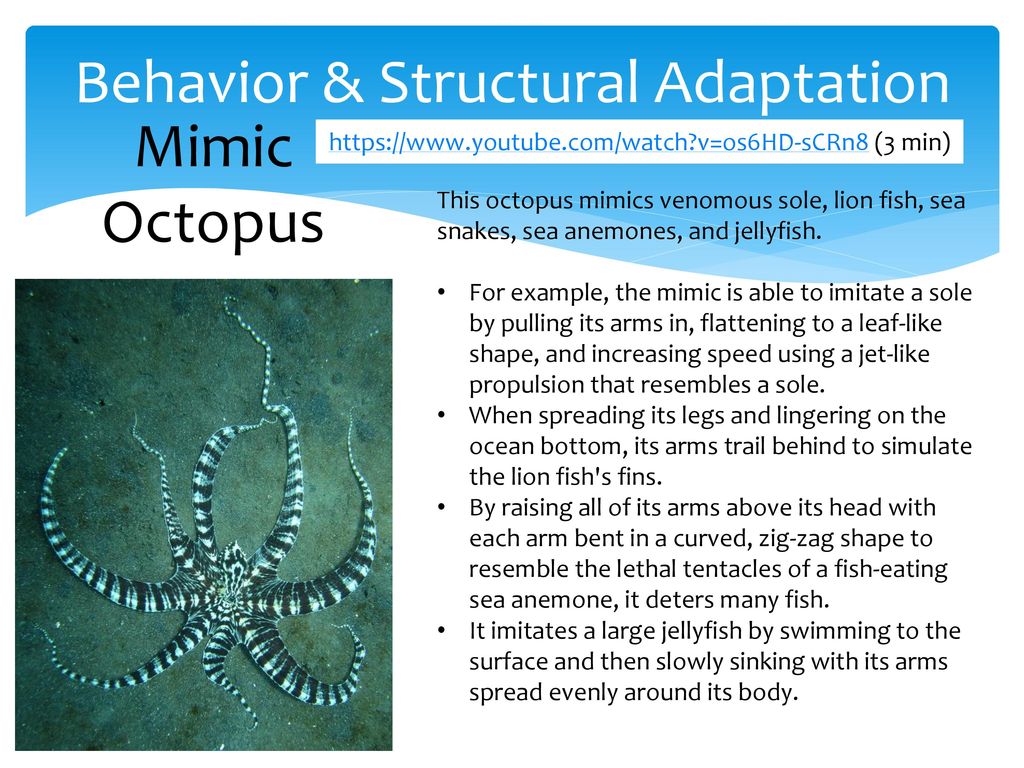
Clown fish have a thick mucus covering that provides some protection from these stings. Animal Adaptations in the Intertidal Zone.
Anemone ə ˈ n ɛ m ə n iː is a genus of flowering plants in the buttercup family Ranunculaceae.
What is the anemanis adaption. Animal adaptions are behaviors or physical traits that improve an animals chance of survival in his or her environment. Adaptations are influenced by. Even though an anemone is a simple animal they have many adaptations.
If an anemone feels threatened it can retract itself completely into its base. What adaptations do sea anemone have. Due to their lack of mobility and soft-bodies anemones would be very susceptible to predators.
However adaptations to these limitations such as their stinging tentacles have made sea anemones successful in terms of habitat range and predation. Click to see full answer. What are a sea anemones adaptations.
Sea anemones use their nematocysts small stinging cellsto attack prey or to defend itself from enemies. That counts as an adaptation rightyes. Heteractis magnificahave made many adaptations to better prepare itself for survival.
It is an invertebrate and can be found in various sizes and colors and has a great defense system. Large Anemone in Aquarium. The sea anemone benefits from the products of the algaes photosynthesis namely oxygen and food in the form of glycerol glucose and alanine.
The algae in turn are assured a reliable exposure to sunlight and protection from micro-feeders which the sea anemones actively maintain. The algae also benefit by being protected by the sea anemones stinging cells reducing the. A close relative of coral and jellyfish anemones are stinging polyps that spend most of their time attached to rocks on the sea bottom or on coral reefs waiting for fish to pass close enough to.
Anemones are carnivorous feeding on tiny plankton or fish. Their stinging tentacles are triggered by the slightest touch firing a harpoon-like filament called a nematocyst into their prey. Once injected with the paralyzing neurotoxin the prey is guided into the mouth by the tentacles.
The anemone will bud a new anemone that has the exact same DNA. Anemones will release sperm or eggs into the water. Sometimes the sperm and eggs meet and then a new anemone will begin to form.
It can take a couple weeks before the anemone fully develops and can settle onto rocks. Sea Anemones Adapt Their Venom to Accommodate Changing Prey and Sea Conditions. Many animals use venom to protect themselves from predators and to catch prey.
Some like jellyfish have tentacles while others like bees and snakes use stingers and fangs to inject their prey with venomous toxins. Additionally what kinds of conditions do organisms. Immunity to Anemone Poison.
One of the most important clown fish adaptations is an immunity to the poison anemone secrete to kill their prey. When a clown fish first approaches an anemone he touches the anemone several times developing this immunity. Clown fish have a thick mucus covering that provides some protection from these stings.
Anemones have adapted to a wide range of habitats from the muddy depths of sea lochs to seashores wrecks and offshore reefs. Some even attach to other living creatures. Where is anemone found.
More than 1000 sea anemone species are found throughout the worlds oceans and survive at depths of more than 32000 feet below sea level. Anemones will feed on just about any animal that wanders to close to the tentacles or happens to fall in. Anemones will feed on small fish snails limpets crabs and other marine life.
The tentacles of the Anemones are covered with specialized stinging cells called Nematocysts. The Nematocysts will shoot a very small barb connected to the cell. Anemone ə ˈ n ɛ m ə n iː is a genus of flowering plants in the buttercup family Ranunculaceae.
Plants of the genus are commonly called windflowers. They are native to the temperate and subtropical regions of all continents except Australia New Zealand and Antarctica. Other behaviours and adaptations.
At low tide the Waratah Anemone looks like a small red blob on crevices near rock pools. In this state it has all its tentacles drawn in to minimise its exposure to the air while it waits for the return of the tide. Animal Adaptations in the Intertidal Zone.
The intertidal zone is the area on a beach situated between the high tide and the low tide. This zone often includes more than one habitat including wetlands and rocky cliffs. The intertidal zone provides habitat to a variety of animal species such as mollusks crustaceans worms some.
When you visit a tide pool and put your finger into a sea anemone it grabs onto your finger. What is really happening. It activates stinging barbs that inject neurotoxin into your skin.
What adaptations do sea anemones have. Anemones can release themselves and swim to a new location mostly using flexing motions. Surrounding the oral disc are many stinging tentacles.
Most commonly spotted as dark red blobs in rockpools beadlet anemones are attached to rocks all around the coast of the UK the base of their body acting as a sucker to keep them secure in place. The magic of the beadlet anemone is only revealed once the tide comes in. As it is only then that their thick short tentacles become visible.
Other behaviours and adaptations. The tentacles of the Tube Anemone reach out of the tube and capture small animals using stinging cells nematocysts. The main body of the animal is not attached to the tube and can retract rapidly when threatened.
Divers often see the anemone disappearing into the sediment as they approach for a closer look.